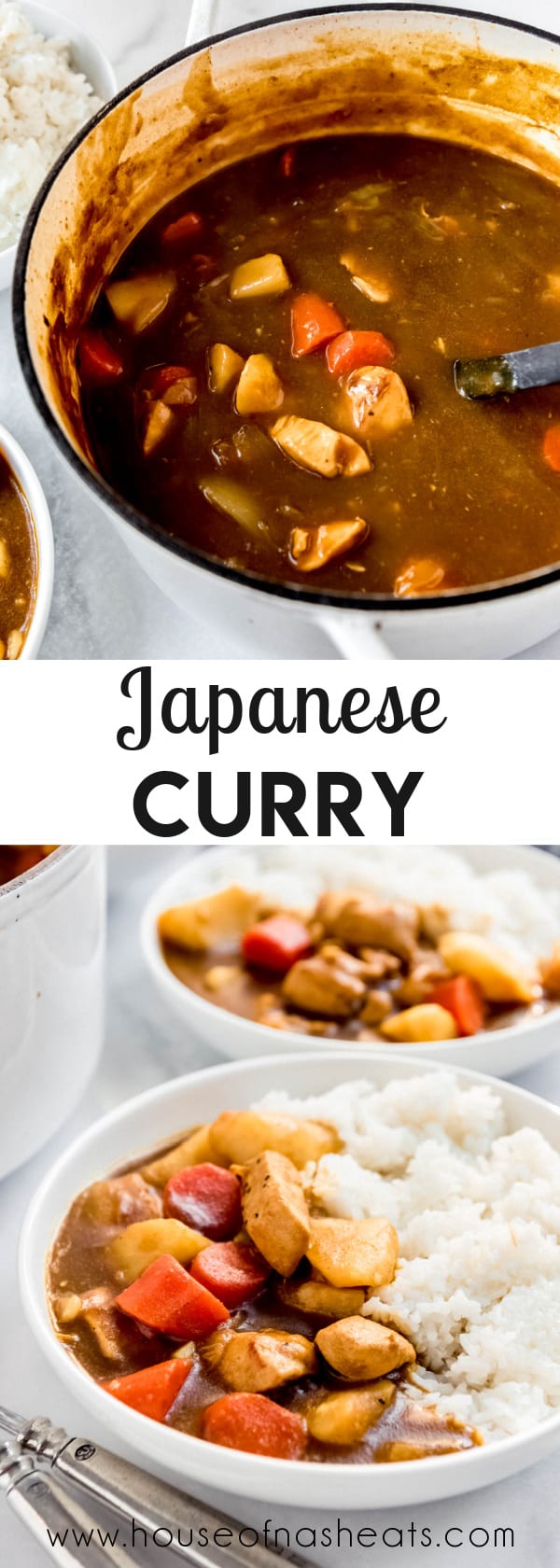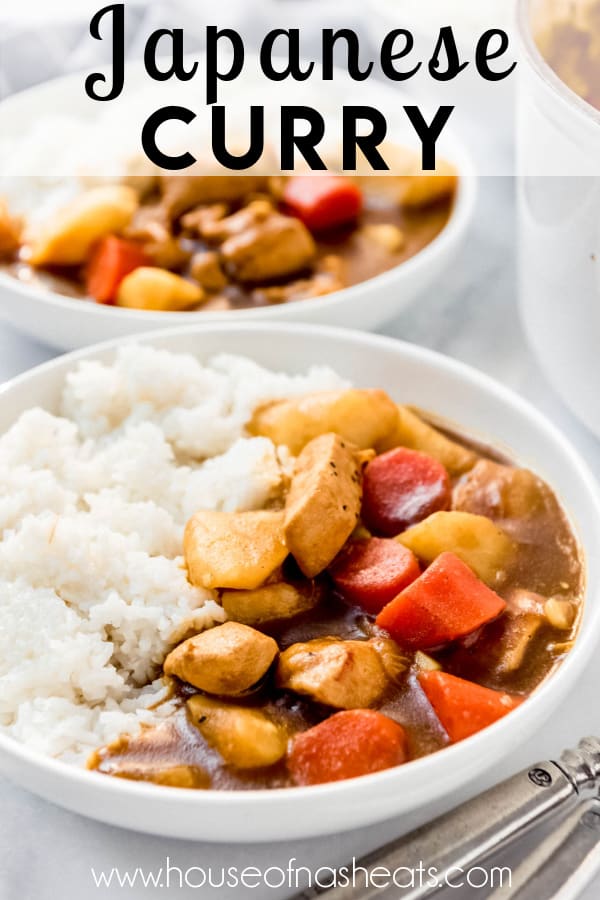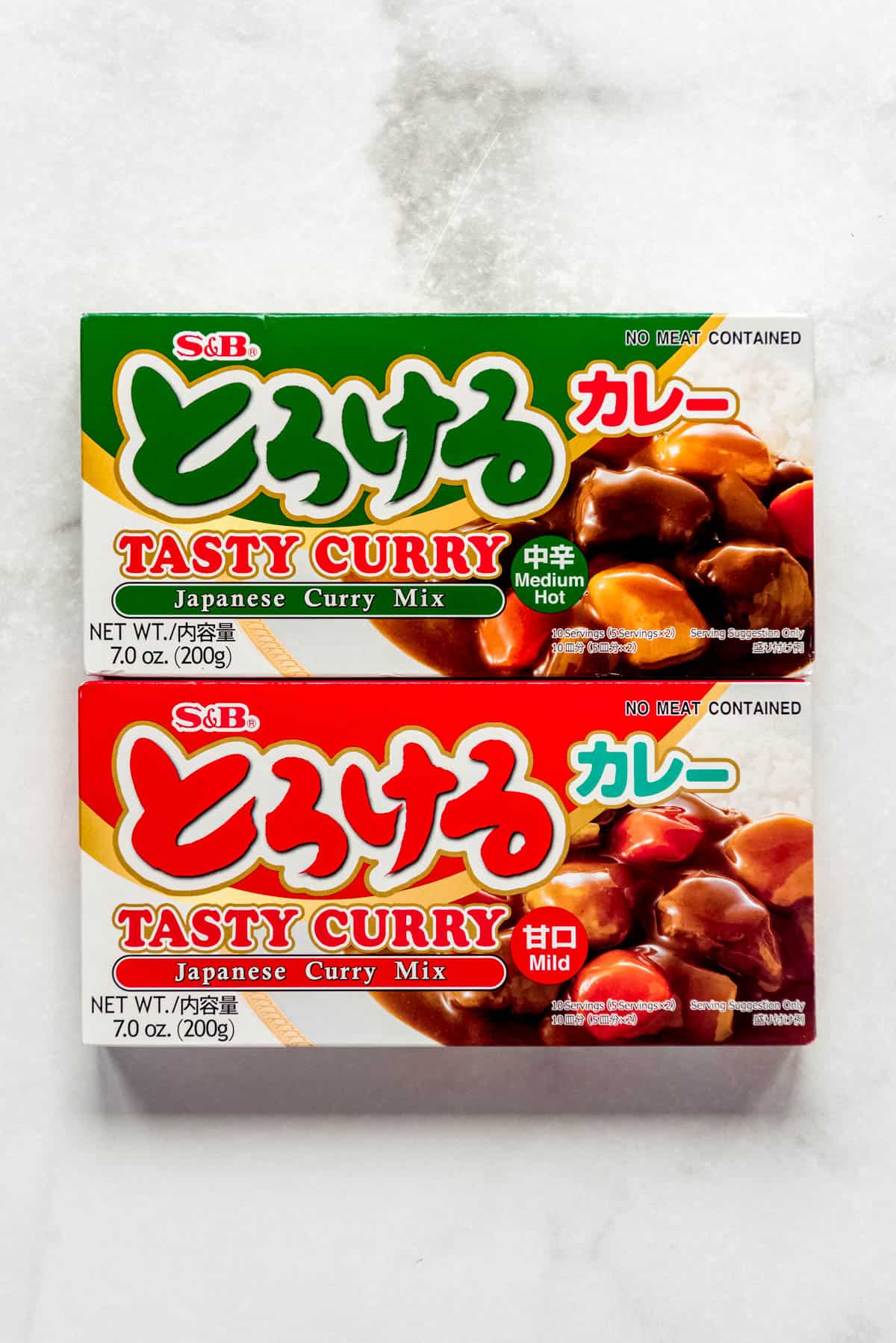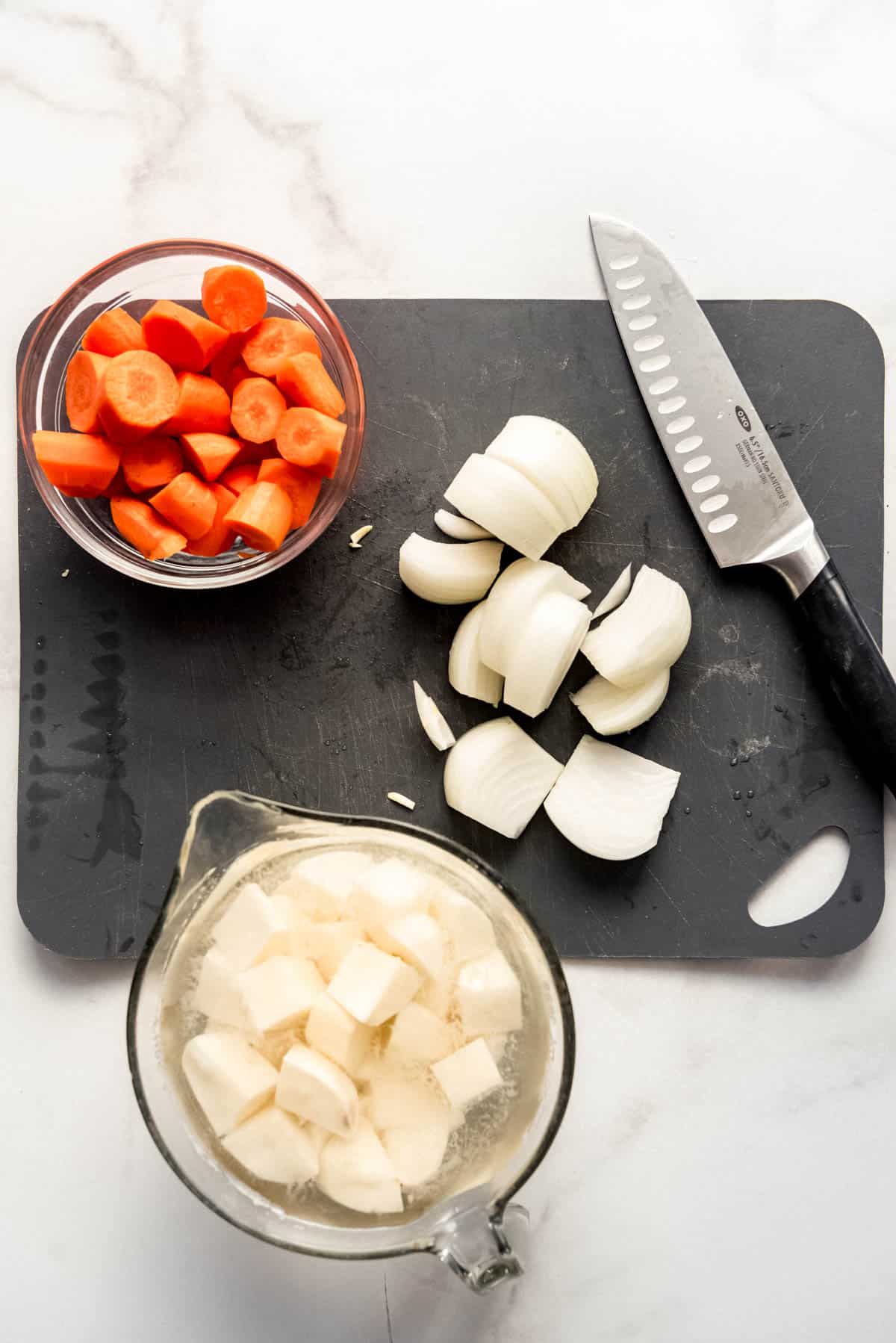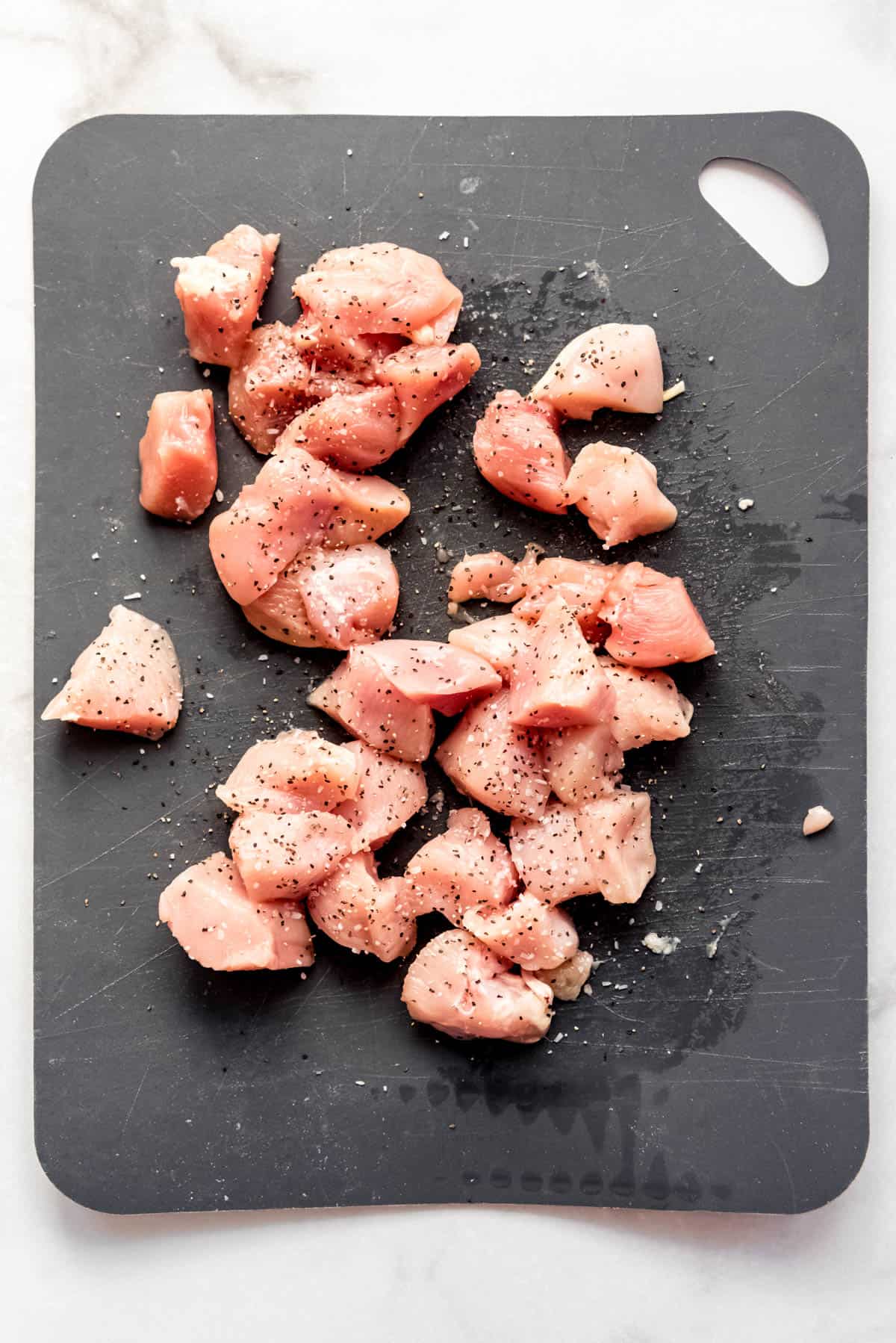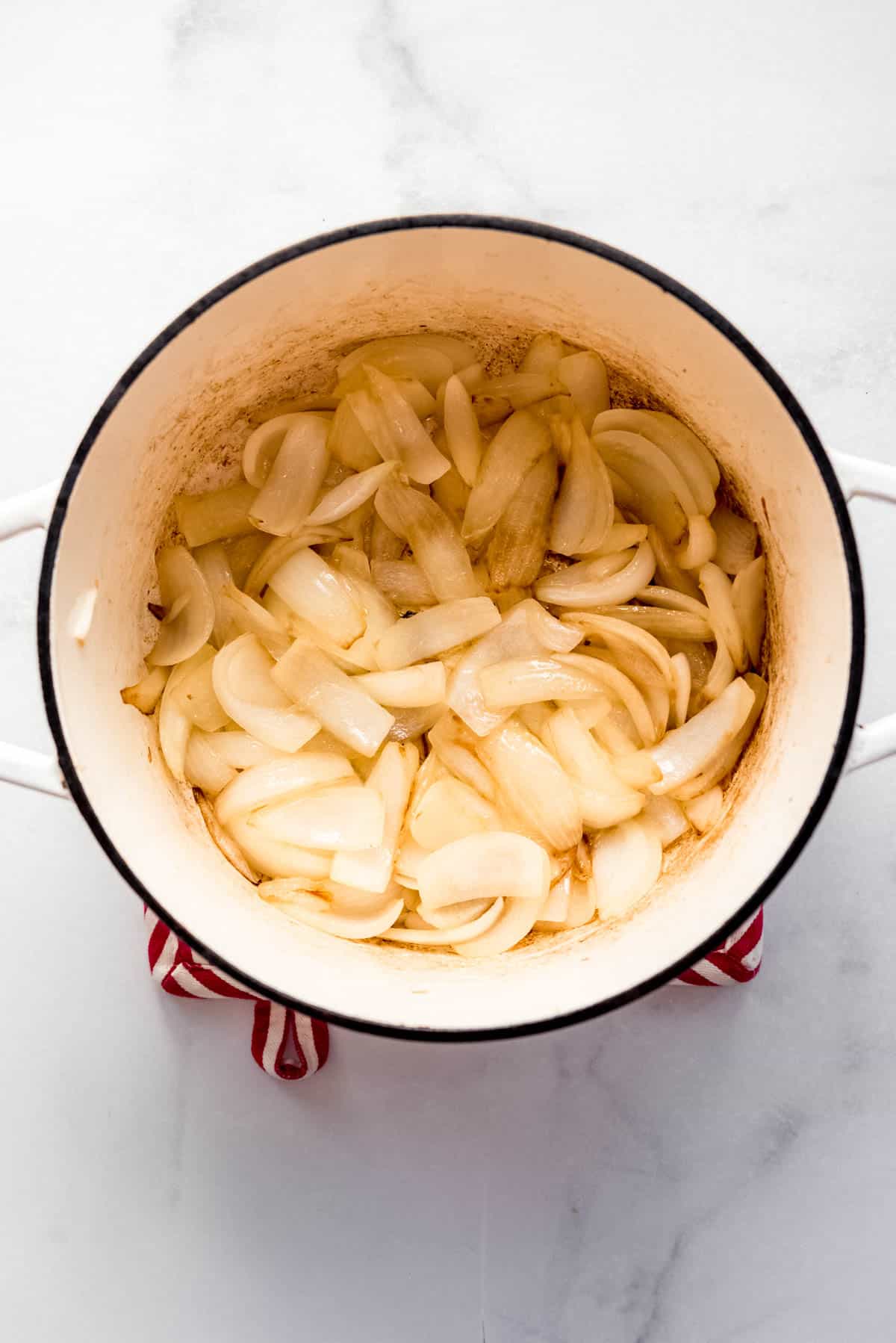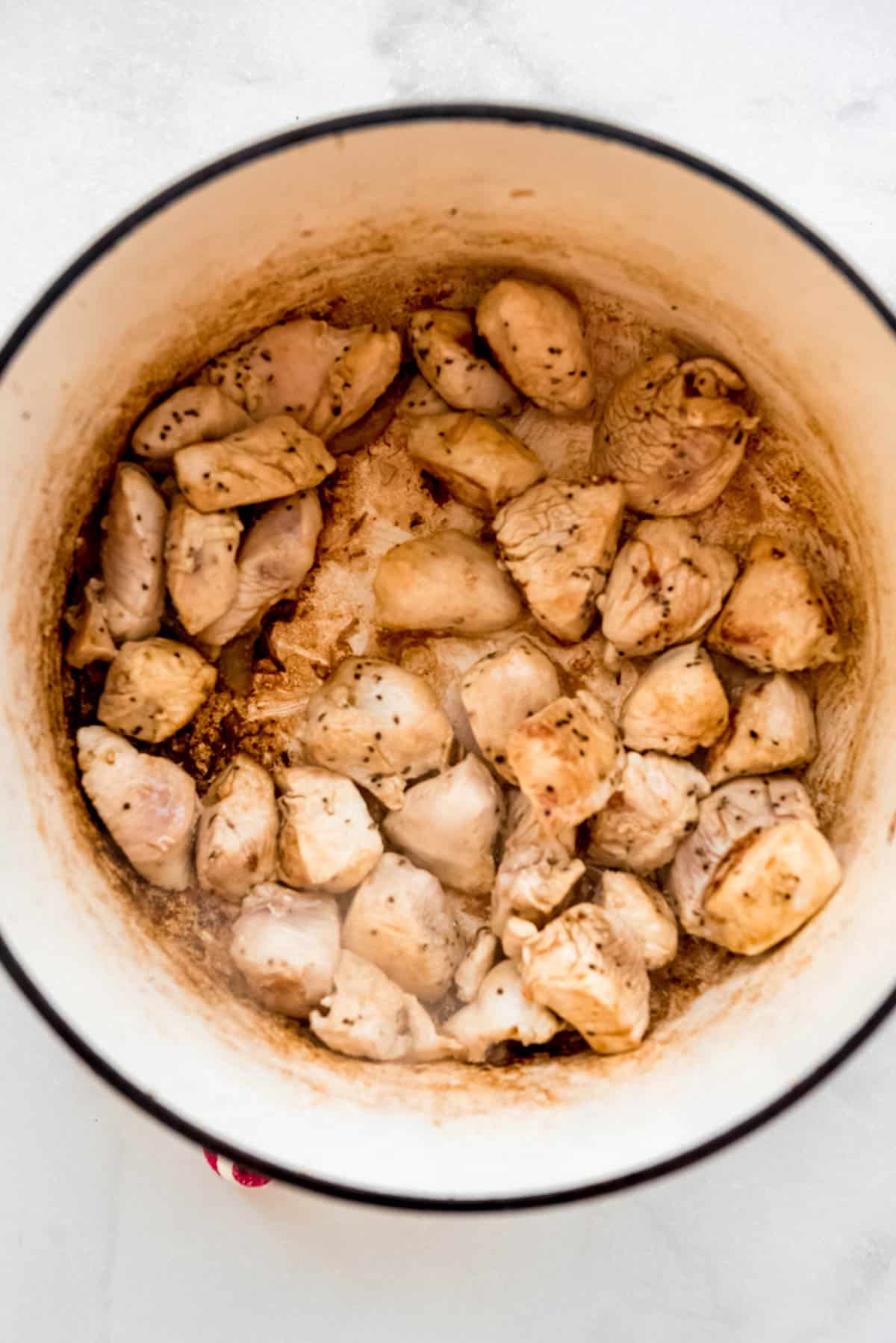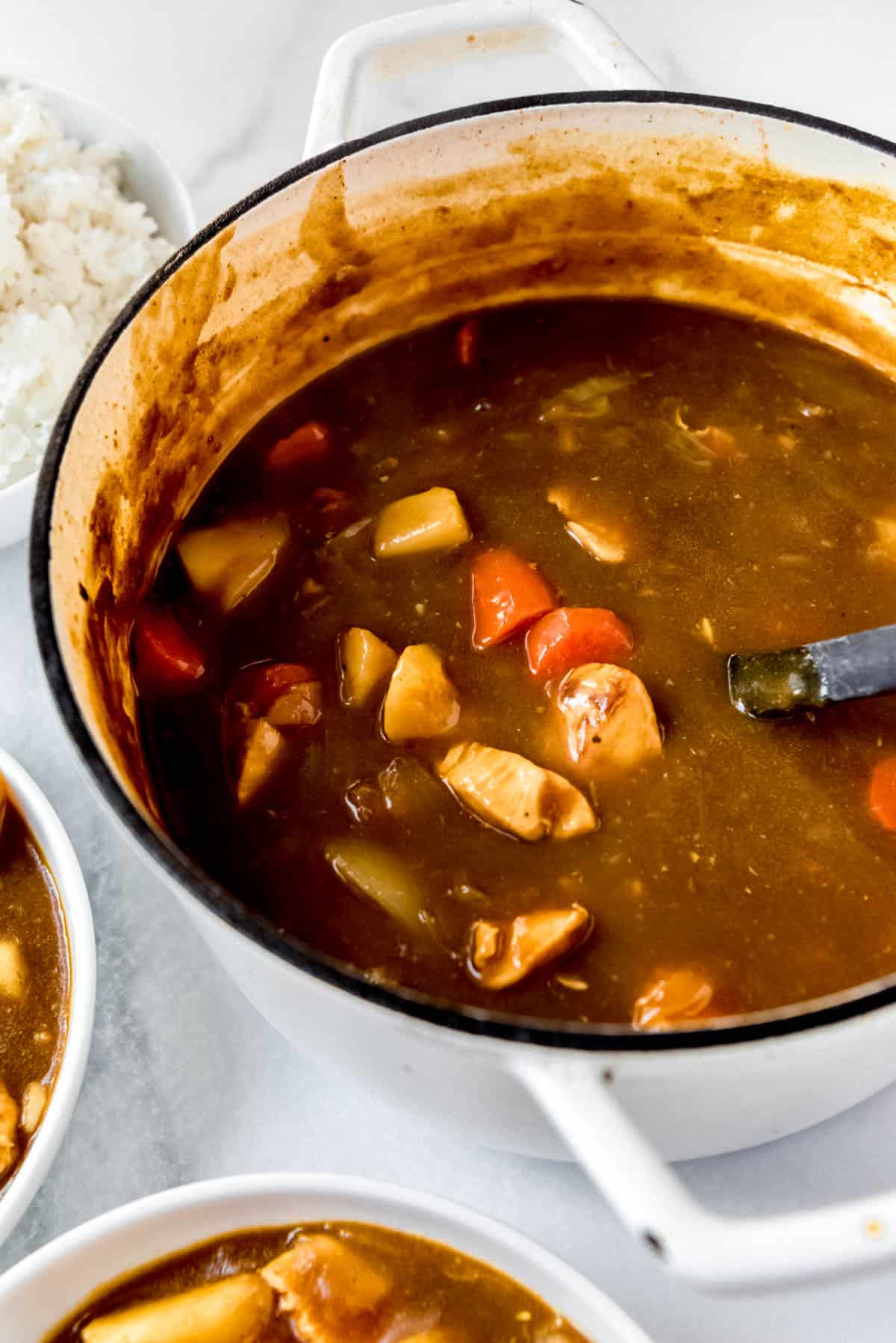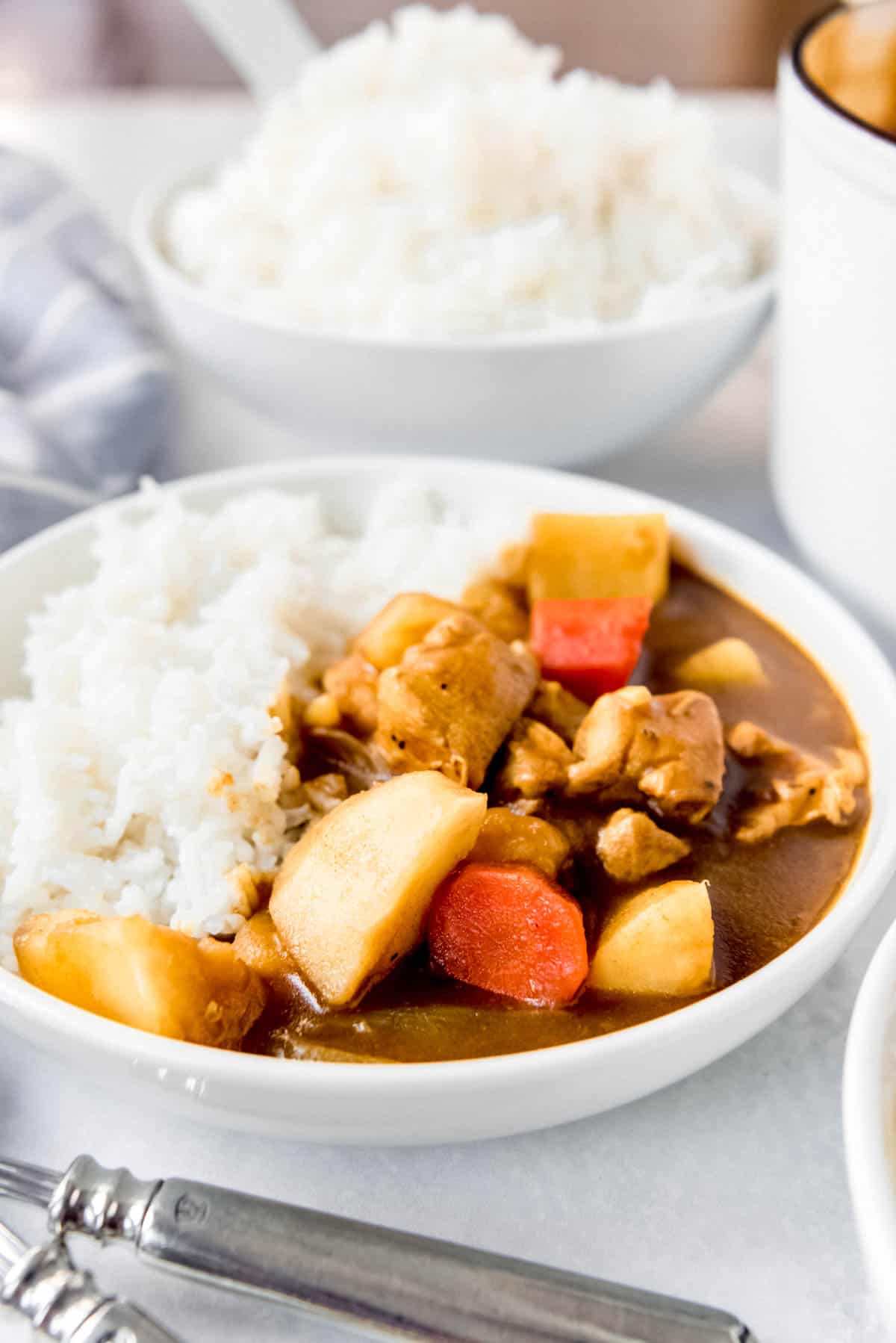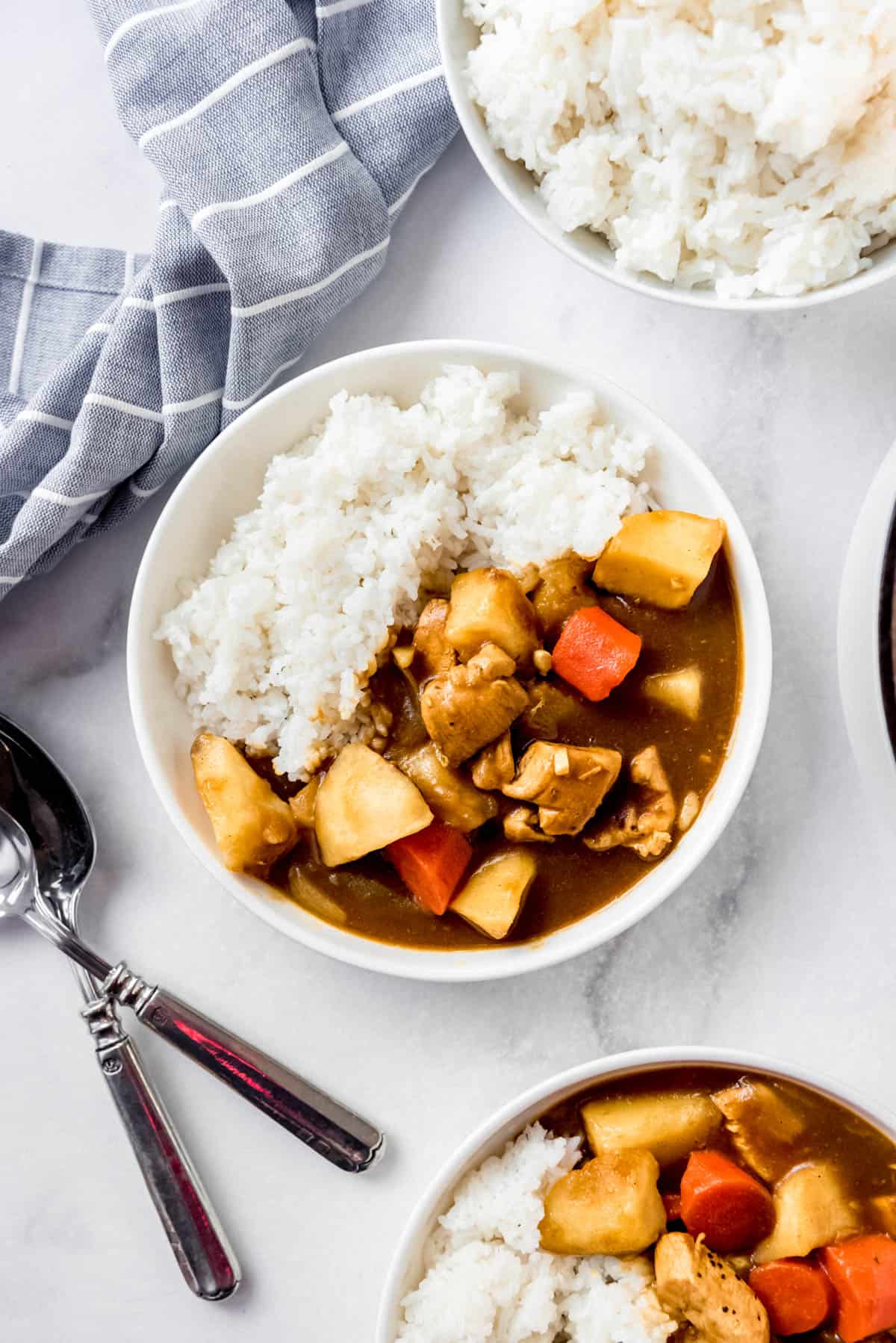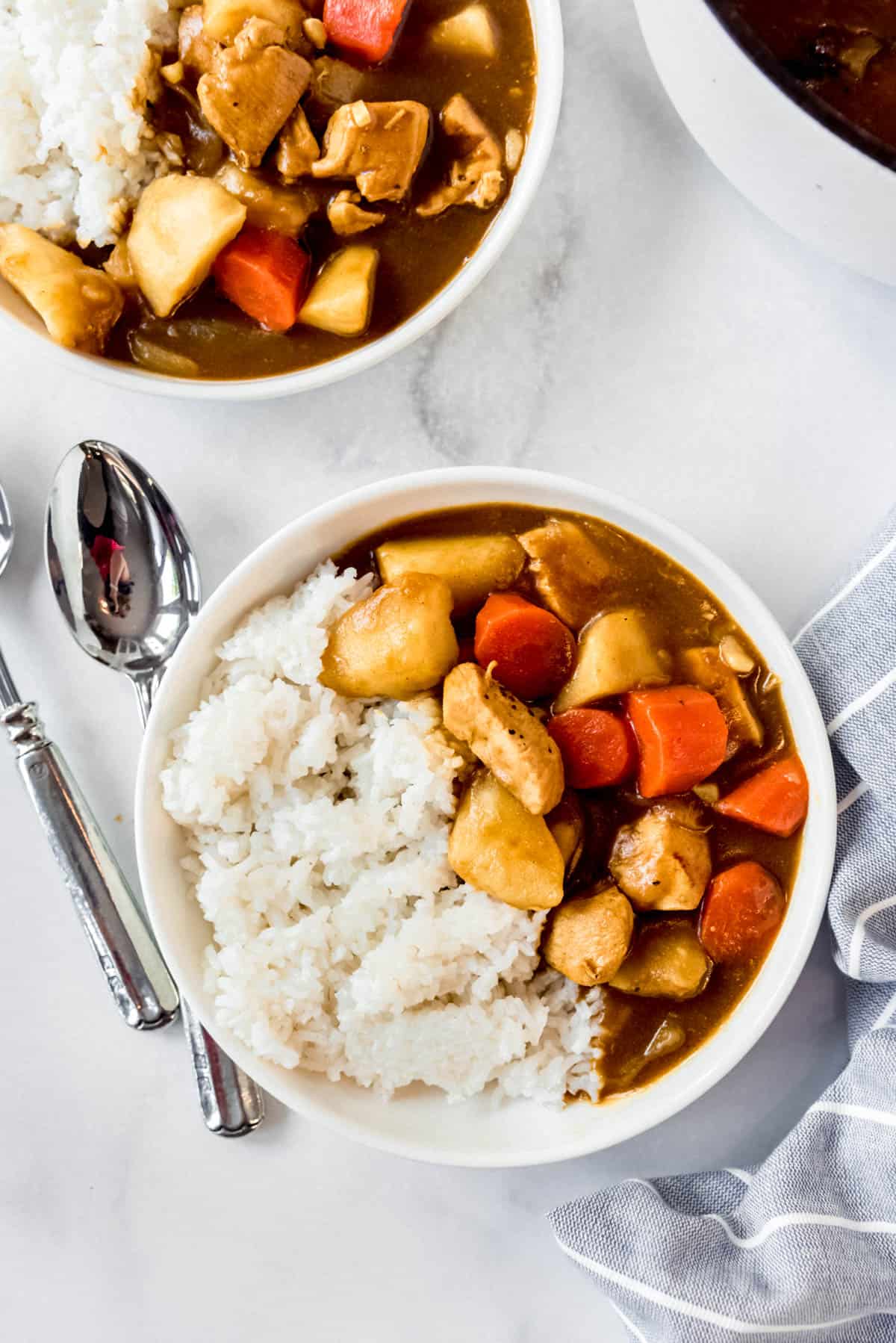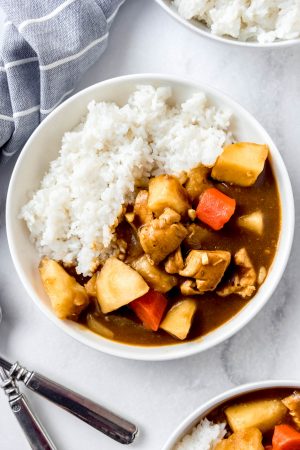Eating chicken for dinner too often can get boring unless you change it up from time to time! Some of our other favorite ways to change up our standard chicken dinner are Chicken Flautas, White Chicken Chili, and Chicken Fettuccine Alfredo. My oldest daughter’s best friend’s mom is from Japan and came to the U.S. to go to college. So while we were at the park one day I asked her what was one of her favorite Japanese foods that she made for her kids. Without hesitation she told me it was Japanese curry and said she would bring me a couple of boxes of the curry base that she uses. She was very specific about needing both the mild and medium hot boxes of curry base in order to get just the right amount of heat and flavor, so I stuck close to her instructions and we all loved this easy, delicious curry! The kids were asking for second helpings and the leftovers made a fantastic lunch the next day as well. Japanese curry is less spicy and a little sweeter than the Indian and Thai curries that I am more familiar with. It also has a thicker gravy or sauce than, say, Thai yellow curry (my personal favorite of all curries). I left the potato and carrot chunks fairly large so they didn’t get lost in the flavorful curry gravy and the chicken was tender and delicious. We served it with white rice and it made a filling and wonderful meal that is going to have to go into our regular rotation. I can see why this dish, known as Kare Raisu or “curry rice” in Japan, is a popular choice for many mom’s in Japan because it’s a quick and easy dish that’s hearty, satisfying, and kid-friendly. All mom’s want their kids to eat well, no matter what culture we come from!
Recipe Ingredients
Japanese curry roux mix: You can make Japanese curry from scratch (it’s basically just butter, flour, curry powder, garam masala, and cayenne pepper), which I would love to try someday, but my friend Yuko was adamant that nobody in Japan does that when I questioned her about that approach. Instead the most common approach is to use a curry roux mix that comes in blocks or squares that are solid and similar in appearance to bars of chocolate. They come in varying degrees of intensity, but Yuko said combining mild and medium gives the perfect balance. Potatoes: You can use russet or yukon gold potatoes in your curry, although I prefer how russets break down a bit more for this one. Be sure to peel your russets and cut them into large-ish, maybe 1 1/2-inch chunks. Carrots: There is a special way of cutting carrots in Japan known as “rangiri” where you slice diagonally, then rotate the carrot a quarter turn for your next slice, etc. This provides more surface area for better flavor absorption and perfectly sized bites of vegetable. Sure you could just slice your carrots into little logs or discs, but why not go for the authenticity factor by trying a new technique? Onions: You will want to cut the onions into wedges rather than chopping them. This is easily done by slicing off both ends of the onion and peeling the outer skin off. Then set the onion on one of it’s sliced flat sides and simply cut it into sixths or eighths, depending on how big your onions are. Garlic: Just a couple of minced cloves will do since there is already a lot of flavor in the curry mix. Chicken broth and water: Japanese curry can be very salty so a mix of chicken broth and water keeps the sodium down a bit. You could even just use all water or go for a low-sodium chicken broth. Chicken: I used chicken breasts since I happened to have some on hand, but next time I’m going to try thighs, which I think would be even better in this curry. Oil: Just a little bit to help saute the onions and sear the chicken in the pan. Salt & pepper: This is just for seasoning the chicken before searing to help develop the levels of flavor in the dish.
How to Make Japanese Curry
Recipe Tips
Other proteins: You can make this same recipe using beef instead of chicken. Or use cauliflower instead of chicken to make it meatless. Variations: Many people who make Japanese curry like to add extra ingredients to make it their own. Combining different brands or levels of spiciness like we do here is a common approach, but so is adding a grated apple to increase sweetness. Adding some honey or mirin is another way of boosting the sweetness which goes well with the saltiness of this dish.
I always do my best to research recipes from other cultures thoroughly to represent them as best I can. If this recipe is from your country or culture and you have suggestions for how I can improve its authenticity, please let me know in the comments below! It’s important to us to share beloved foods of other cultures with as much accuracy as possible, while also considering things like accessibility of ingredients and ease of preparation for most home cooks.
More Easy Dinner Recipes
Yakitori (Japanese Chicken Skewers) Chicken Stroganoff Recipe Smoky Chicken Tinga Tacos New Orleans-Style Cajun Chicken and Sausage Gumbo Russian Chicken Orange Chicken
Recipe adapted from my friend Yuko’s instructions, the back of the box of Japanese curry mix, and Just One Cookbook. Let me know what you thought with a comment and rating below. You can also take a picture and tag me on Instagram @houseofnasheats or share it on the Pinterest pin so I can see.
More International Recipes
Ginger Salad Dressing representing Japan by Devour Dinner Fried Polenta representing Italy by That Recipe Beetroot Salata representing Sudan by Magical Ingredients Fluffernutter Blondies representing the USA by The Spiffy Cookie Penne alla Vodka representing Italy by Lemon Blossoms
